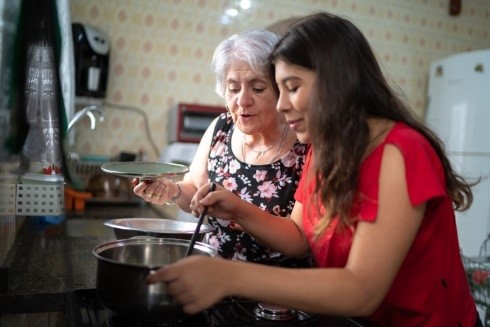Simple Ways to Eat Less Meat
Eating less meat doesn't make you a vegetarian
 Are you thinking about eating less meat? Or do you simply want to eat more fruits and vegetables? Reducing your intake of red meat is important for a heart-healthy diet. In fact, people in the United States who eat a plant-based diet are less likely to experience heart disease. You don't have to become a vegetarian to benefit from eating less meat.
Are you thinking about eating less meat? Or do you simply want to eat more fruits and vegetables? Reducing your intake of red meat is important for a heart-healthy diet. In fact, people in the United States who eat a plant-based diet are less likely to experience heart disease. You don't have to become a vegetarian to benefit from eating less meat.
Here are a few things you should know if you're considering a plant-based diet.
What is plant-based?
A plant-based diet focuses on plants, grains, vegetables, fruits, and nuts. It can still include limited amounts of fish, meat, poultry, and dairy products. Eating less meat is as simple as moving vegetables and fruits from a side dish to a starring role. If a meatless diet is not for you, don't worry. You don't have to go cold turkey on meat to adopt a heart-healthy eating style.
Meat can be loaded with cholesterol and saturated fat, which may contribute to poor heart health. Processed meats like deli meat, bacon, and sausage often have high amounts of sodium. Choose to focus on healthier sources of protein such as lean meats, skinless poultry, and fish.
Benefits of eating less meat
Whether you're considering eating less meat or giving it up entirely, the benefits are clear: less risk of disease and improved health and well-being. Specifically, less meat decreases the risk of:
Heart disease and stroke
Obesity and diabetes
High blood pressure and high cholesterol
Many cancers
Plant-Based Diets
The five most popular plant-based diets:
Plant-forward is a cooking and eating style that emphasizes plant-based foods but is not strictly limited to them. Meat may be included, but it's usually not the main feature of the meal.
A vegan diet is entirely plant-based. It excludes anything that comes from an animal - meat, fish, dairy, eggs, and even honey.
Vegetarians also eat a plant-based diet, but their menu may include dairy and eggs.
Pescatarians avoid meat and poultry but eat seafood.
A flexitarian is a vegetarian that sometimes indulges in meat or fish but mostly sticks to plant-based foods.
Making the change
Going plant-forward is easier than ever these days. Begin by seeking out enticing vegetarian recipes that are easy to prepare. Experiment with a meatless meal once a week, then add more days as you get used to it. Your heart health and your waistline might get used to it, too. More tips for going meatless:
Consider a vegetarian meal when eating out.
Keep the refrigerator and pantry stocked with plant-based alternatives like vegetables, beans, nuts, whole grains, and tofu.
Let friends and family know you're trying more meatless meals. They may surprise you with suggestions and recipes as well.
Please vote in our unscientific poll. All responses are anonymous.
Read More
Vegan Recipes (Nutrition and Food Services)
Vegetarian Recipes (Nutrition and Food Services)
Five Steps to a Healthier Heart
Make a Heart-Healthy Shopping List
Updated March 9, 2021

